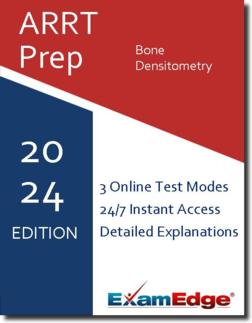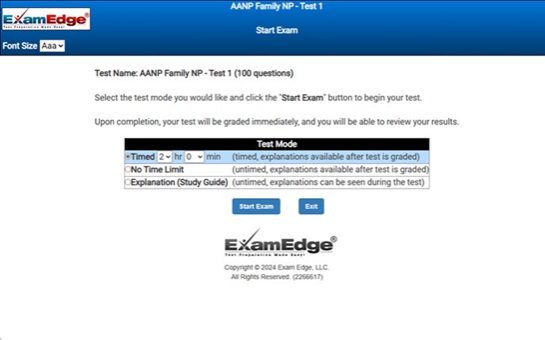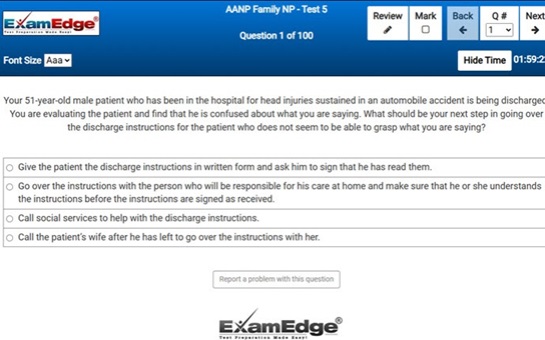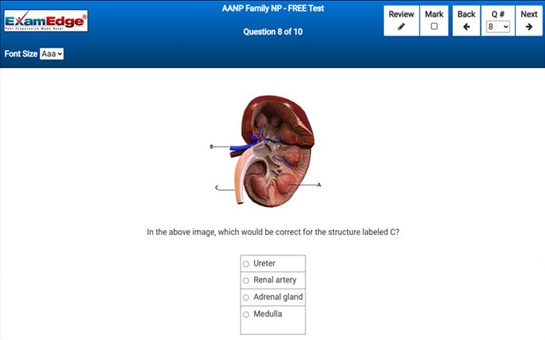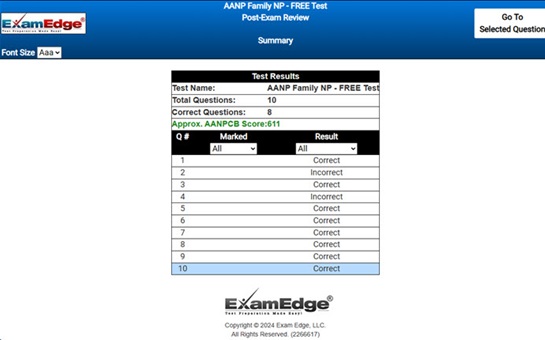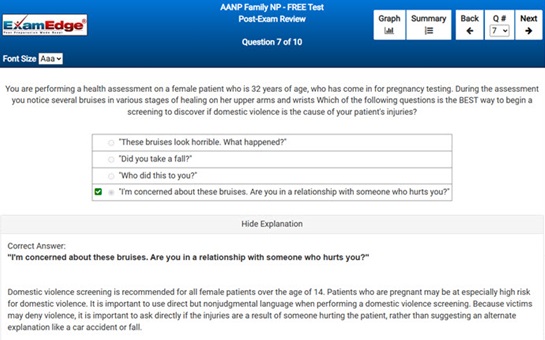ARRT Bone Densitometry (BONE) Practice Tests & Test Prep by Exam Edge - FAQ
Get Instant Online Access Now!
** Sample images, content may not apply to your exam **
The best test prep involves studying both the subject matter and the exam itself! Read on for ARRT Bone Densitometry FAQs and other test information.
Our practice tests are designed to help you master both the subject matter and the art of test-taking. Created to mimic the real exam, our practice tests feature:
- Instant access to your online practice tests - available 24/7
- Timed, untimed, and "study guide" modes
- Detailed explanations for each question
- 15 online practice exams - That's 1,125 unique questions
Review the information below and if you have any additional questions about ARRT Bone Densitometry practice tests that have not been answered here, Click her to contact Exam Edge Support.
Select Your Test Bundle
Excellent
ARRT Bone Densitometry (BONE) Shortcuts
General Exam Info
Exam Topics
Additional Info
Features
Study Plan Tips
Test Reviews
Why Exam Edge?
FAQ
Related Blogs
Take a FREE Test
Why should I use Exam Edge to prepare for the ARRT Bone Densitometry Exam?
FAQ's for Exam Edge ARRT Bone Densitometry practice tests
We have ten great reasons why Exam Edge is the #1 source on the internet when it comes to preparing for ARRT Bone Densitometry test:
- Comprehensive content: Exam Edge's ARRT Bone Densitometry practice tests are created specifically to prepare you for the real exam. All our ARRT Bone Densitometry practice test questions parallel the topics covered on the real test. The topics themselves are covered in the same proportions as the real test too, based on outlines provided by the American Registry of Radiologic Technologists in their ARRT Bone Densitometry test guidelines.
- Realistic practice: Our ARRT Bone Densitometry practice exams are designed to help familiarize you with the real test. With the same time limits as the real exam, our practice tests enable you to practice your pacing and time management ahead of test day.
- Detailed explanations: As you complete your practice tests, we show you which questions you answered correctly and which ones you answered incorrectly, in addition to providing you with detailed step-by-step explanations for every single ARRT Bone Densitometry practice exam question.
- Performance insights: After you complete a practice test, we provide you with your raw score (how many you answered correctly) and our estimate of the ARRT Bone Densitometry score you would have received if you had taken the real test.
- Ease of access: Because all our practice tests are web-based, there is no software to install. You can take ARRT Bone Densitometry practice exams on any device with access to the internet, at any time.
- Flexible use: If you must pause while taking one of our practice tests, you can continue right where you left off. When you continue the test, you will start exactly where you were, and with the same amount of time you had remaining.
- Thousands of unique questions: We offer 15 different online practice exams with 1,125 unique questions to help you prepare for your ARRT Bone Densitometry !
- Low cost: The cost of ordering 5 practice tests is less than the cost of taking the real ARRT Bone Densitometry test. In other words, it would be less expensive to order 5 practice tests than to retake the real ARRT Bone Densitometry exam!
- Our trusted reputation: As a fully accredited member of the Better Business Bureau, we uphold the highest level of business standards. You can rest assured that we maintain all of the BBB Standards for Trust.
- Additional support: If you need additional help, we offer specialized tutoring. Our tutors are trained to help prepare you for success on the ARRT Bone Densitometry exam.
What score do I need to pass the ARRT Bone Densitometry Exam?
To pass the ARRT Bone Densitometry test you need a score of 75.
The range of possible scores is 0 to 100.
How do I know the practice tests are reflective of the actual ARRT Bone Densitometry ?
At Exam Edge, we are proud to invest time and effort to make sure that our practice tests are as realistic as possible. Our practice tests help you prepare by replicating key qualities of the real test, including:
- The topics covered
- The level of difficulty
- The maximum time-limit
- The look and feel of navigating the exam
Do you offer practice tests for other American Registry of Radiologic Technologists subjects?
Yes! We offer practice tests for 10 different exam subjects, and there are 140 unique exams utilizing 13625 practice exam questions. Every subject has a free sample practice test you can try too!
ARRT Bone Densitometry
(BD
®
)
Practice Tests
ARRT Cardiac-Interventional Radiography (CI)
Practice Tests
ARRT Computed Tomography
(CT
®
)
Practice Tests
ARRT Limited Scope of Practice in Radiography
(RAD
®
)
Practice Tests
ARRT Magnetic Resonance Imaging (MRI)
Practice Tests
ARRT Mammography (MAMM)
Practice Tests
ARRT Radiography
(RAD
®
)
Practice Tests
ARRT Registered Radiologist Assistant
(RRA
®
)
Practice Tests
ARRT Sonography (SONO)
Practice Tests
ARRT Vascular-Interventional Radiography
(VI
®
)
Practice Tests
To order tests, or take a sample test, for a different subject:
Click on ' Name on the Exam Name' You will be take to the orders page
How do I register for the real American Registry of Radiologic Technologists?
For up-to-date information about registration for the American Registry of Radiologic Technologists, refer to the American Registry of Radiologic Technologists website.
What are the ARRT exams?
You are considering a career in radiologic technology and hear about the ARRT exam requirement. Just what do the ARRT examinations entail?
What is the American Registry of Radiologic Technologists (ARRT) ?
The American Registry of Radiologic Technologists (ARRT) is an organization that grants certification and registration to qualified individuals in medical imaging, interventional procedures, and radiation therapy. ARRT offers 13 credential options via three pathways: primary, post-primary, and physician extender. While the three pathways share the same exam requirements, they vary in education requirements. More specifics on pathways and requirements can be found at www.arrt.org.
Eligible candidates must sit for an ARRT examination that measures knowledge of daily tasks that an entry-level technologist performs. These computer-based tests, administered by Pearson Vue, consist mainly of multiple-choice items. Testing times vary according to discipline and range from 2 ¼ hours up to 7 ½ hours, with most lasting about 4 hours. This total test time includes time for a tutorial and a non-disclosure agreement prior to testing and a survey following test completion. Likewise, the total number of items range from 105 on the bone densitometry exam to 400 for the sonography exam. This total number includes a sampling of pilot items which appear randomly throughout the test and do not count toward scoring. Exam items focus on the major content areas of patient care, image production, procedures, and safety. Specific topics addressed within each major content category can be found at the ARRT website.
You will receive a preliminary score on the computer after completing your exam. Your final score packet will be mailed within 4 weeks. This final score packet will include the official score report and certification and registration results. Scores are scaled and range from 1 – 99 with 75 being the minimum score needed to pass.
ARRT Bone Densitometry - FAQ Sample Questions
|
|
|
|

